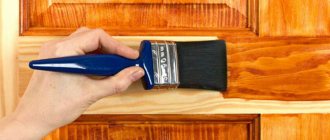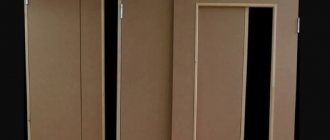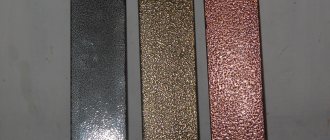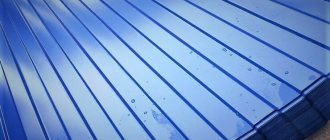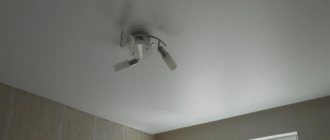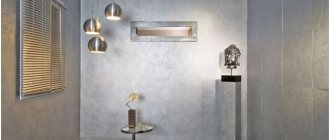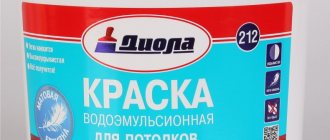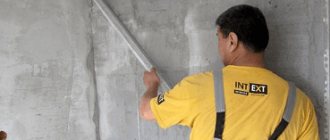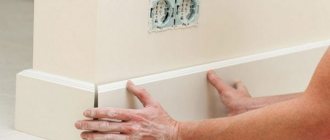Hammer paint or, as it is also called, blacksmith paint got its name because of its appearance after drying. The effect was as if the object had been hit with a heavy hammer. It interacts well with the external environment due to the high density of the substance. Anti-corrosion and moisture-repellent. There are several ways to apply enamel to the surface, but the easiest way is to use a roller. So, where is blacksmith's paint used?
Carrying out work
This type of paint can be applied with a brush or roller.
Some types of coloring composition are sold in special spray cans. It is advisable to apply the coloring composition to a horizontal surface. This means that it is advisable to remove vertical surfaces (doors, gates) and provide them with a horizontal position. If this is not possible, you should choose hammer paint with increased viscosity and hardening speed to avoid smudges.
Procedure:
The surface on which the paint will be applied must be well cleaned of dust, debris and other contaminants.
It is also important to remove any greasy or oily traces from the surface. Mix the paint thoroughly. During storage, a precipitate forms in the coloring composition; it is necessary to bring the solution to a uniform distribution of particles and elements in it. Apply the coloring composition in an even layer
The paint should be applied fairly quickly, as it sets and thickens quite quickly in the open air. After application, you must wait 30-40 minutes for the applied layer to harden. Another layer is applied to the surface with the frozen layer. Then the algorithm is repeated: after applying the layer, a break is taken, then the surface is covered with paint again. Typically 2-3 coats are required.
Adviсe:
- The paint composition with a hammer effect should be applied using a fur roller. The paint on the foam roller may corrode.
- To paint gates or doors in a vertical position, it is better to use a spray gun. This device sprays paint in micro-droplets, which ensures quick drying and no smudges.
- You can control the color decorative effect. For example, taking one color as a basis, highlight various elements of the design with a different color, applying it last.
- Complete drying of all layers occurs after 24 hours. Before this time has expired, it is necessary to exclude mechanical impact on the painted surface.
- Do not work with this coloring composition in conditions of high humidity or temperature. If work is carried out indoors, sufficient ventilation must be ensured at all times.
- It is better to sand glossy surfaces before using hammer paint to achieve a slight roughness.
- If the product you are going to paint is new, then take care to thoroughly remove the factory grease. Fatty and oily contaminants prevent the adhesion of the paint composition to the surface.
For information on how to paint metal with hammer paint, see below.
Application area
Traditionally, hammer painting was used in the manufacture of forged and cast iron products. Nowadays, blacksmith paint is used to cover a wide variety of metal objects and surfaces:
- interior and garden furniture (office cabinets, safes, indoor chairs, park benches);
- parts of machines and mechanisms (casings of machines, housings of electrical panels, elements of vehicles);
- doors, gates, fences;
- steel structures for construction purposes (supports, beams, fastenings, drainpipes, weather vanes);
- small functional and decorative items (frames, shelves, forged jewelry, garden tools, technical tools, metal fittings).
Hammer enamels are widely used for painting forged products and furniture.
Hammer enamel can be applied not only to metal, but also to surfaces made of wood, hard plastic, glass, and ceramic tiles.
When deciding on the use of blacksmith paint, you must remember that it is best applied to horizontal surfaces. The emulsion will drain from vertical planes, and the characteristic shagreen effect will not form. It is good if it is possible to turn the object into a horizontal position. If you need to paint a vertical surface, you will need quick-drying hammer paint, which does not have time to spread.
How to paint a car
How to paint flat surfaces is quite clear, but how to apply paint to a car? First of all, you need to prepare tools and materials:
- directly hammer enamel;
- short-haired roller or spray;
- solvent No. 647;
- enamel primer;
- abrasive material.
Attention! Prepare all the necessary items in advance; they should be nearby, as they may be needed at any moment. The enamel dries very quickly, so there is no delay in working with it.
Although blacksmith paint does not require preliminary priming, experts still recommend doing this to achieve the highest quality of painting.
Stages of staining:
- Clean the parts and vehicle from dirt and dust.
- Degrease surfaces with special solutions.
- If there is severe rust, get rid of it. To do this you will need abrasive paper (sandpaper). Even if there is no rust, still use sandpaper, since the enamel adheres better to a rough surface, plus adhesion increases.
- A rust converter can be used to remove large areas of corrosion. If you bought Hammerite enamel, then don't worry about corrosion. Because paint contains substances that coat rust.
- Treat the surfaces with primer-enamel, which must first be diluted.
- Now pour the paint into a construction ditch and dip the roller into it. When it is soaked, roll it over the ribbed surface of the cuvette. Or get your spray gun ready for use.
- Then you can paint large surfaces. After applying the first coat, wait 30 minutes before applying the second coat.
Complete drying of the mixture is achieved after seven hours, but it is permissible to operate the machine only after three days. You can cover the last layer with regular varnish. This will improve the decorative qualities of the painted surface.
Important! The glossy coating of the car must be removed - the paint does not adhere to such a surface, only to a matte one. https://www.youtube.com/embed/S2erJ3MW9fI
Preparatory stage
Before painting stainless steel, it is imperative to thoroughly prepare the product. The final result will depend on the quality of its implementation. Work stages include:
- They start by examining the condition of the selected item; if there are no major defects, there is no need to carry out additional alignment. Due to poor adhesion of an even and smooth base with dyes, which will affect the quality of painting;
- The base is sanded, this will help improve the adhesion of the surface. For small items, use a wire brush to create a rough and matte base. Large areas will be easier to work with a medium-grit sanding attachment;
- Proceed to degreasing the base. The use of acid or alkaline based products is suitable for this purpose. For example, when using an ammonia product, care must be taken to protect the respiratory tract. The master must put on a respirator; good ventilation is created in the room. If you don't have it at home, you can prepare a 4% soda solution.
For degreasing, acid or alkaline based products are suitable.
Peculiarities
Hammer paint is intended for painting rusty surfaces. The presence or absence of an original layer of other paint, as well as the execution of external or internal work, does not matter. In all cases, the coloring composition manifests itself with dignity and quality. It acquired its name from the appearance of the applied coating. It appears to be made of metal that was hand hammered with a blacksmith's hammer.
Initially, hammer paints were used to cover industrial and laboratory equipment, for which external beauty was less important than service life. Until recently, no other hammer paint colors (except gray) were produced.
It is capable of masking significant differences in the surface, and can also be used for re-painting. In recent years, technologists have corrected the shortcomings of their predecessors, and now this material is made in a variety of colors and shades.
Briefly about the main thing
Metal products painted with hammer paint are not only reliably protected, but also look stylish and beautiful.
It is important to choose the right brand, paint carefully and let the product dry completely. This paint is relatively expensive, but it has good adhesion and serves well for many years. High-quality hammer paint will reliably protect the metal from moisture, temperature changes and mechanical damage.
High-quality hammer paint will reliably protect the metal from moisture, temperature changes and mechanical damage.
Main characteristics
Hammer paints for metal are formed by a combination of acrylic, epoxy and alkyd-styrene substances. To bind them together, crushed fine glass and aluminum powder are used. Liquid dye has a high level of adhesion. Once it hardens, a very strong protective layer appears on the surface of the metal.
The introduction of metal powders increases the strength of the paint coating, but makes this mixture unsuitable for spray application. You will have to work manually (with a brush). Modern samples of hammer paints contain different types of color dyes.
This material is very resistant to temperature changes, so it can be used safely up to 80 degrees Celsius. There is no need to scrupulously clean and prime the rusty surface (while other varnishes, paints and enamels necessarily require such preparation, but even with its careful execution they do not always adhere well and stably).
The painting process is very simple and easy, and the painted layer is not sticky.
Even vibration cannot destroy its layer, and its anti-corrosion properties last for at least 6-7 years. Hammer paint is safe for humans. If you use it to touch up defects in the base coating, the difference in their tone will be barely noticeable.
Conclusion
The article talked about how to paint rusty gates and new ones for the garage. The process is not complicated and is accessible to any home craftsman. The main thing is to follow the instructions for use and application of paint (see also the article “Heat-resistant paint for metal: properties and individual characteristics”).
The video in this article will help you find additional information on this topic.
The facade of a building is the initial impression of both the house and its owner. Even expensive and high-quality materials used in construction.
The main component of every interior is certainly furniture. Probably everyone knows the feeling of being fed up with the atmosphere in the apartment and being crazy.
Today, even in modern homes you can find a classic Russian stove. But what to do if the old stove structure spoils the appearance of the room.
Unusuality
After drying, it again surprises with its unusual properties, unique to it.
Differences between hammer paint and regular and nitro enamels:
- does not require pre-treatment of the surface before painting;
- moisture and heat resistant;
- resistant to UV radiation, does not fade in the sun;
- painted surfaces are resistant to any detergents;
- simplicity of the painting process, accessible even to beginners;
- allows you to paint not only metal, but also any other material.
Let's take a closer look at these differences:
- Pre-treatment of painted surfaces.
It has been reduced to a minimum. The fact is that hammer paint includes the additional function of removing rust. This means there is no longer any need to spend time and effort cleaning off all the rust spots before painting. The paint itself is able to neutralize them.
Of course, if the rust peels off in pieces, then this place must be cleaned. Otherwise, the paint will hide it completely, but the corrosion process will continue. It’s not hard to guess where this will lead.
- Moisture and heat resistance.
It would be appropriate to include here also such an indicator as paint strength. The whole highlight is that the composition contains acrylic, alkyd-styrene and epoxy bases. In combination with aluminum powder and fine glass, all these components work truly miracles. The paint becomes more resistant to moisture and temperature changes.
The change in its properties begins at temperatures above 130ᵒ C. Thanks to increased adhesion (the ability to adhere to other materials), it adheres very firmly to the painted surface. For example, no one has ever been able to remove the bottom layer of paint during a renovation.
- UV resistance.
Ultraviolet rays destroy any enamel and paint, but not hammer paint. Thanks to its special properties, it does not fade in the sun. Color stays constant
Car enthusiasts pay special attention to this parameter. They are no less pleased with the fact that the paint is resistant to any detergents
- Possibility to paint any materials.
, concrete
On the one hand, the main determining factor in this case will be that the paint is more expensive than conventional enamels. And the hammer effect on such surfaces is less prominent, not at all the same as on iron.
On the other hand, painted products acquire reliable protection from any atmospheric phenomena for 8 years without changing their appearance.
The surface painted with this paint acquires a textured metallic sheen and a barely perceptible roughness. This is clearly visible in the photo. The color range of hammer paint is quite extensive. It is not difficult to choose any desired color.
Advantages and disadvantages
The undoubted advantages of blacksmith paint include:
- Efficient leveling . Enamel smoothes out minor defects.
- Corrosion protection . Protects metal from the formation of iron oxides for 8 years.
- High temperature resistance . Most compositions can withstand heating up to + 80 °C.
- Quick drying . The polymerization period for the aerosol application method is no more than 2 hours.
- Decent durability . Not afraid of vibration, moderate mechanical impacts and precipitation.
- Work without long preparation . There is no need to putty or prime the surface. It is enough to remove loose rust.
There were some downsides :
- Low elasticity . In places where bends and dents form, microcracks form where moisture can penetrate.
- Poor compatibility . They can be applied without any complaints unless on coatings with a similar base of binding components.
How to paint with hammer paint using a roller: video
From the above, it can be understood that enamel has many positive qualities and is now used even on wooden surfaces. The best way to work with a helmet is with a roller. Everything seems clear, but to consolidate everything, I suggest watching a video about applying the mixture with a roller. Enjoy watching.
Acrylic and water-based paints are widely known to consumers. Many people are experienced enough to use them without paying much attention to the manufacturers' instructions. But the same cannot be said about hammer paint, although its merits are not in doubt. In some cases it is necessary to use only this coating.
Nitro paint dries quickly
Hammer paint for metal doors
Nitro enamel and oil paint are used for exterior work. Painting of metal structures is carried out over the entire area only in dry weather. The coating requires good preparation:
- degreasing;
- removing rust;
- remove old finish;
- sweep away the dust.
The surface can be matte or glossy. They are made on the basis of drying oil and solvent. To obtain a more liquid composition, it is necessary to dilute it with a solvent. The norm is no more than 20% of the old thick mixture. The consumption per m2 is high, since more than 3 layers are required.
Before starting work with your own hands, you need to decide how to degrease the metal before painting. To remove the oil film, it is better to use a liquid solvent, dilute it with water. The wash removes old coating and soil from every m2 of area.
Hammer enamel painting
The application of hammer enamel to the surface is somewhat different from conventional paints and varnishes. How to paint with this enamel correctly?
The application of hammer enamel to the surface is somewhat different from conventional paints and varnishes.
Preparatory stage
Painting with hammer paint does not involve complex preparatory processes, but there are important nuances that allow the work to be carried out efficiently:
- If the coating will be applied to a new metal product, then it must be cleaned of factory grease using a degreaser (white spirit, solvent or acetone). To improve the adhesion process to the surface, after cleaning it must be treated with a metal brush or sandpaper;
- when painting products that already have a paint layer, it is recommended to remove peeling areas, wash the surface with soapy water and clean water and dry thoroughly;
- before painting galvanized, aluminum surfaces or stainless steel products, it is recommended to first apply a special primer for non-ferrous metals;
- wooden surfaces are pre-treated with acrylic primer, which prevents the coloring agent from penetrating into the pores;
- exfoliated and clearly loose rust is removed with a metal brush.
Applying paint
First of all, it is recommended to observe the temperature regime (the permissible range ranges from +10-+25°C) and air humidity (up to 85%). The most suitable layer thickness to ensure proper anti-corrosion effect is at least 100 microns.
Basic application methods:
Painting with brushes. The most popular method for painting small areas and products with complex configurations. Paint is applied in 2-3 layers, with special attention paid to careful processing of corners, edges and edges. Natural bristle brushes are most suitable for such work. Roller painting This is the ideal way to paint large surfaces. First of all, the substance is applied to the edges and corners, after which they proceed to the main body. It is best to use wool or fur rollers. To ensure uniform application, a small amount of dye is poured onto the product, and then carefully rolled out with a roller. Aerosol paint is most convenient to use for correcting minor defects and when painting small areas. Before starting work, the canister with the substance must be shaken vigorously for three minutes after the sound of the mixing ball is heard. The paint is applied in 3-4 layers, and the sprayer must be kept at a distance of 20 cm from the surface to be treated. The first layer is allowed to dry for two to three minutes, and each subsequent layer should dry for about twenty minutes. Spray painting. Used for processing large areas. The key to successful painting is the correct calculation of paint viscosity. As a rule, the composition instructions contain detailed recommendations on the proportions of the compound with the solvent (most often 2:1)
It is important to consider that this ratio is effective only at an air temperature of 18-22°C. Exceeding the temperature requires more solvent - otherwise the formation of the so-called “cobweb” is possible
If paint and varnish work is carried out at temperatures below 17-18°C, then the amount of solvent must be reduced, since the paint will spread. Painting using airless spray. Suitable for painting large flat and textured surfaces. Before starting the procedure, the enamel is diluted with a solvent in a ratio of 9:1, after which the sprayer is shaken to obtain a homogeneous composition. The further principle of operation is no different from painting with a spray gun.
If you have no experience in carrying out such work, then you can familiarize yourself in detail with all the intricacies by looking at the corresponding photos and videos, or even turn to professional painters for help. After all, correcting any mistakes when applying hammer paints is very difficult and often expensive.
What it is?
After its introduction, hammer paint was used only in production. Due to its exceptional durability, it has become indispensable for painting equipment operating in adverse conditions. Moisture corroded the frames of machines and machines, and forge paint reliably protected the mechanisms from rust and premature failure.
The vast majority of paints and varnishes adhere well only to specially prepared surfaces. Preparation consists of cleaning and subsequent priming.
The dye “gets along” well with damaged metal, firmly connects with them, and stops the negative process that has begun.
After multi-colored enamels appeared, blacksmith’s dye began to appear in previously inaccessible areas of human activity.
At first, doors painted with them appeared on sale in private homes. Dull dark colors were replaced by original bright colors with sparkles and tints. The first products were so attractive that they simply did not install others in new cottages. Since then, the entrance to each new house has been distinguished by its hammer color.
Demand created supply. The well-proven dye has become widely in demand. This means that a vast field of activity has opened up for designers. And they were not long in coming.
Today, hammer paints and enamels are present on forged products, including:
- fences;
- gate;
- metal furniture;
- sculptural compositions;
- decorative dyes.
The beautiful, durable material has found application inside residential premises and public institutions. Now they process not only metal. Blacksmith paints work well on wood, glass and hard plastics.
It is useless to paint factory products without removing the grease from them. Thus, new sheet steel or rolled steel requires cleaning with white spirit or acetone. For better adhesion, you need to go over the sheets with coarse sandpaper.
Varieties
There are the following types of hammer paint:
ML-165. Produced on an alkyd-styrene base. Characterized by good adhesion and heat resistance (withstands up to +130°C). Suitable for painting any surfaces
Disadvantages include a negative impact on the respiratory system during the application process, as well as a high fire hazard, so precautions must be taken. NTs-221. Designed for decorative purposes, ideal for exterior and interior renovation work, and has a fairly low price
However, it does not protect painted products from corrosion or heat. EP-1323 ME. Epoxy product 2 in 1 (that is, primer and paint). Excellent metal paint with anti-corrosion effect and thermal properties. Used for painting construction equipment, cars, gates, doors, fences. Can be applied to rust and cast iron products. Hammerite. A very expensive and high-quality coloring agent made in England. Made on the basis of alkyd resins and silicone additives, thanks to which the protective effect is significantly enhanced. It is not recommended to apply the composition using a spray gun, since this device will not provide the desired effect and will also increase the consumption of the dye.
Making hammer paint at home
Some craftsmen have gotten used to making hammer enamel themselves. To do this you need to prepare the following ingredients:
- varnish (UVL-1) – 96.8%;
- aluminum shavings – 3-6% – ensures the creation of a hammer effect;
- soot – 0.2-0.5%. This component gives the coating a dark tint;
- silicone oil – forms relief.
Enamel ml-165
The first three components are mixed until the chips stop floating. To change the shade, add colored enamel (no more than 30% of the total mass of the composition). Next, add a few drops of silicone oil. Painting should begin immediately after production. Most often, homemade hammer compounds are used for painting vehicles.
TOP most popular brands of coatings for metal
Nowadays, enamels for painting metal are produced by a huge number of manufacturers, but not all of them have gained popularity among consumers. However, there are certain brands that are in particular demand and popularity among developers. These are manufacturers of high-quality paint and varnish products such as Hammerite, Ace Rust Stop Enamel, Sniezka, CERTA and others. The TOP most popular anti-vandal and protective compounds include the following brands:
Enamels from the English world brand Hammerite have long established themselves as high-quality compositions for coating metal surfaces of all types. They have excellent anti-corrosion properties and significantly increase the service life of external metal structures.
The main advantages of the brand are:
- very fast drying speed;
- no drips or splashes during application;
- the ability to apply the composition directly to rust;
- long service life (up to 8 years or more).
This American brand produces weather-resistant enamels for exterior and interior use. Glazing wood preservatives for exterior use comparison? The paint of this brand can improve the wear resistance of a metal surface for many years.
The compositions have a huge range of colors and are perfect for painting iron doors and other surfaces.
The advantages of products from Ace are:
- high anti-corrosion performance;
- resistance to mechanical action;
- long service life.
Sherwin Williams is one of the largest manufacturers of paint and varnish products in the United States. The characteristic features of the enamels of this brand are the magnificent glossy appearance of painted surfaces and a wide range of color compositions.
The main advantages of Sherwin William paint:
- increased corrosion protection;
- resistance to mechanical damage;
- weather resistance;
- low toxicity;
Protective enamels from the domestic manufacturer CERTA have been successfully used in our country for fifteen years. The brand produces quick-drying paint with anti-corrosion properties.
The advantages of the Certa Plast brand are:
- resistance to ultraviolet radiation;
- immunity to temperature changes;
- weather resistance;
- long service life;
- economical price.
Additional Information:
This is a special type of solution for metal, which allows you to get an interesting external effect. The basis of such compositions can be different, but the decorative result is achieved through aluminum powder and fine glass fraction. A special additive is silicone oil.
Today, the construction market is replete with a huge number of paints for exterior metal work. In any construction supermarket you can easily find enamels of various types and types, differing from each other in their composition, technological characteristics and price.
We present a catalog of paints for special purpose metal: primer-enamels, enamels, “3 in 1” paints. The main advantage of our product range is the ability to choose paint for specific operating conditions, application and for a specific type of metal. Optimally selected protective material is the key to effective operation of metal structures.
You can purchase enamels for metal wholesale and retail at. Paint for galvanized metal against rust? For more than ten years, we have been producing high-quality paint and varnish products, which are presented in a wide range under the trademarks “Unikom”, “Dacryl”, “Polyureton” in the website catalog.
Similar compositions are applied to various surfaces made of metal. They are actively used against rust for outdoor work. There is no need to use primers before applying enamel to the surface. This is due to the fact that primer with enamel is a combination of the advantages of a primer mixture, anti-corrosion paint and enamel for metal surfaces.
As a result, the sequence of work with primer-enamel is greatly simplified, and all you have to do is follow simple recommendations.
All of them are used in most cases in everyday life. In addition to them, there are two-component epoxy paints, silicone-based coatings, polyurethane paints and other types, but these are already industrial lines. Such paints provide greater resistance to corrosion, can withstand high temperatures and withstand aggressive environments. However, the cost of such enamels is quite high, so for household needs a simpler metal paint is usually used, the price of which is in the range of 200-300 rubles per liter.
This material is quite consistent with the quality and does not cost too much.
Technology
First of all, you need to carry out the necessary preparatory measures. First of all, you need to clean the door from dirt and oil stains.
For this you will need:
- brush;
- rags;
- detergent;
- white spirit or acetone.
All that remains is to wash the front door and degrease it.
The next step will be processing the entire surface. It is not a complicated process, requiring only a metal brush and sandpaper. Any remaining old paint and deep rust must be carefully removed. The essence of this work comes down to preparing the cleaned areas on the metal so that hammer paint can adhere more firmly to it. At this point, preparation of the door for painting can be considered complete.
There is no fundamental difference in how to paint the door - with a roller, a brush or a spray gun. In any case, you need to follow the technology for performing painting work. The ideal temperature for painting will be between +5 - +30ᵒ C with air humidity up to 85%. You need to paint in 3 – 4 layers.
Please note: After applying each coat of paint, you need to allow time for it to dry. The duration is indicated in the manufacturer's instructions. Each subsequent one is applied perpendicular to the previous one.
Before painting, you need to stir the paint well. This is best done with a clean wooden stick. For ease of use, paint is poured into a tray if painting is done with a roller or brush. The main thing is not to forget to dilute the paint with a solvent before use.
Each subsequent one is applied perpendicular to the previous one. Before painting, you need to stir the paint well. This is best done with a clean wooden stick. For ease of use, paint is poured into a tray if painting is done with a roller or brush. The main thing is not to forget to dilute the paint with a solvent before use.
Expert advice: before painting, lay the door on a horizontal surface and remove the fittings (handles, locks).
The painting of gates is carried out using the same technology as for doors.
This requires certain skills and experience in performing such work.
The difficulty is that not everyone can choose the right color or make the right consistency of paint.
Not everyone can adjust and set up a spray gun for operation.
Please note: it is better to entrust such a responsible job as painting a car to a specialist.
As a rule, touch-up paint is done at home after minor repairs or the removal of scratches and abrasions. The easiest way to do this is to use ready-made paint from an aerosol can. We carry out the work itself using the same technology as described above.
On the Internet you can find a lot of information and video material about hammer paint. Sometimes there are different numbers for the same parameter. For example, there may be different drying times for paint layers. How to understand this? It's simple - this means that the paint belongs to different manufacturers. By the way, this does not affect its quality at all.
Watch the video in which a specialist gives advice on how to paint gates with hammer paint:
Why is this necessary?
Painting metal garage doors, as well as any others, has several goals:
How to remove old paint from a gate with an angle grinder
Briefly the process can be described as follows:
- If the gate has already been painted, remove the old paint from it with a metal brush or an electric drill with an attachment.
- The surface is degreased with acetone.
- Primer is applied.
- Paint the gate with the chosen paint.
The choice of paint should be discussed in more detail. This is due to the fact that you need to choose an option that does not require updating the coverage every year.
In the photo - Zinga electrically conductive paint for processing garage hinges
What do manufacturers offer us?
Today, the construction industry is ready to offer consumers a wide range of products for outdoor metal work. Each of them has its own specific properties and scope of use.
- Oil paint - its basis is drying oil, previously often used for painting metal products used outdoors. The disadvantage is poor resistance to prolonged exposure to moisture, so today it is not used so often, although its price is inexpensive.
How to spray paint a metal gate
- Acrylic paint - when used for exterior work, it quickly loses its original appearance. This becomes especially noticeable during low temperatures, as it does not tolerate them well.
- Alkyd paint is resistant to aggressive environmental influences and has reliable adhesion to the surface being painted. It has a stable characteristic gloss.
Advice: the product is very toxic, so safety precautions must be observed when working with it.
How to apply fire retardant paints on metal Polistil
Hammer paint
This product should be discussed in more detail. It has good anti-corrosion properties. Used for painting metal products indoors and outdoors (
Hammer paint application technology
| Device | Application | Tool selection | Application technology |
| Brush |
For painting small surfaces and objects with complex relief, for example, forged metal fences. It is advisable to choose brushes with natural bristles. Two layers of enamel are applied to horizontal surfaces, and three, but thinner ones, to vertical surfaces. When painting, special attention is paid to corners, grooves and edges, which are most susceptible to corrosion. Roller
For processing large flat surfaces. A velor or fur roller with short pile will do. Foam rubber products cannot be used - solvents corrode them, and stains remain on the surface to be painted. In addition to the roller, you will need a small brush. Apply in two to three layers. The enamel for the first layer must be diluted (1 part solvent to 9–10 parts paint). The remaining layers can be applied with undiluted paint. First, corners, edges and other places with complex relief are painted with a brush, and then smooth areas are covered with a roller. Aerosol can
For painting small objects and painting over defects on long-painted surfaces. If you buy enamel in a can to paint over defects, you need to accurately select its shade. It is advisable to do a test application on an inconspicuous area of the surface to be painted to ensure that the colors match. Apply in three to four thin layers. The can must be shaken for about three minutes before starting work. The paint is applied from a distance of 15–20 cm. After the first layer, wait 2–3 minutes, after the second and third – 15–20 minutes each. Pneumatic spray gun
For painting large flat and textured surfaces. Painting is carried out in two or three layers, with the first layer being as thin as possible and the last layer being the thickest. The paint is diluted in a ratio of 2:1 and applied at a temperature of +18…+22°C. In other conditions, the viscosity must be adjusted empirically (at lower temperatures, the enamel dries more slowly, and the solution must be thicker so as not to run off the surface). Airless sprayer
For painting large flat and textured surfaces. Before application, the enamel is diluted with a solvent (9:1). The sprayer is thoroughly shaken to obtain a homogeneous emulsion. Next they are painted in the same way as with a pneumatic sprayer.
Thus, knowing how to paint with hammer paint, you can get a reliable protective coating and an interesting decorative effect on almost any surface.
Hammer paint is one of the most durable compounds intended for metal processing. The substance is actively used in many areas: processing of equipment, coating of instruments in laboratories, appliances, household devices (doors, fences) and any other metal products used in difficult conditions or in places with increased requirements for wear resistance. Hammer paint for metal is sold exclusively in one color - gray, and color changes are carried out by adding enamel.
Airless spray technique
Airless spraying is used to treat large surfaces. The paint is diluted in a ratio of 9:1, and the sprayer is thoroughly shaken, which allows you to achieve the optimal paint consistency.
Hammer paint for metal for exterior use is an indispensable paint and varnish product, thanks to which metal structures receive unique properties that do not end with an extravagant appearance.
Resistant and durable, water-repellent, with an anti-corrosion effect - all this is hammer paint for metal. Reviews of enamel confirm the properties declared by the manufacturer in practice, which makes the material preferred by many craftsmen.
